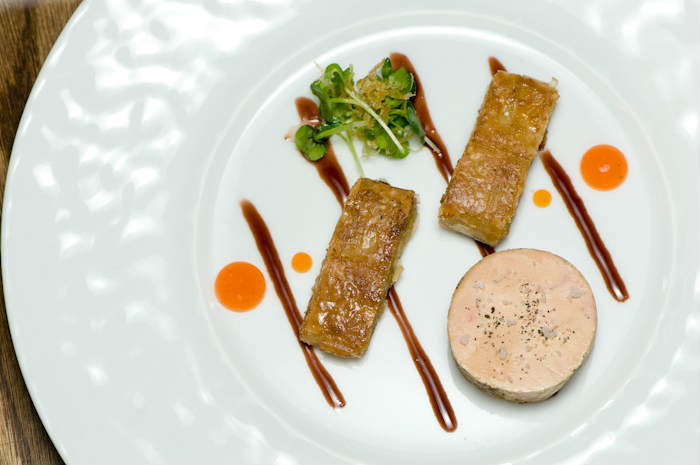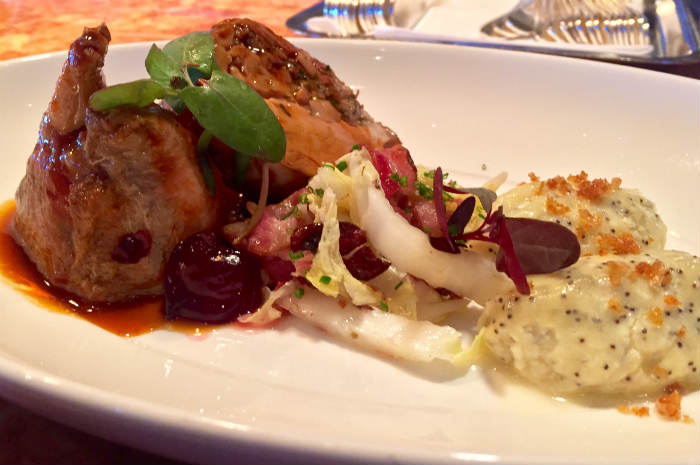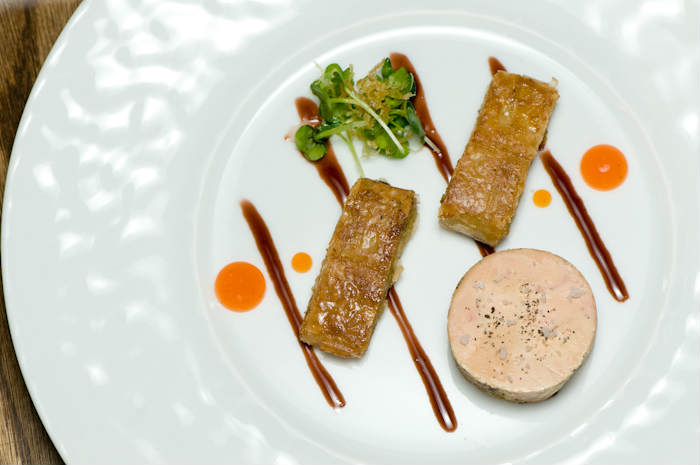German Riesling: A Wine For Every Palate
It's summertime, the temperature is a wilting 90 degrees F., and you're in the mood for a crisp white, "front porch" wine. In other words, a wine that's easy to drink, is refreshing, and pairs well with a wide range of foods.Or perhaps you are serving a formal dinner and want a complex wine to serve with multiple courses; whatever the occasion, try something different and consider delicious German Riesling.
31 Pairings of German Riesling
Long considered one of the world's greatest white wines, German Riesling is a favorite of connoisseurs and collectors, and American consumers are now enjoying this fantastic wine too. So what's all the fuss about? Isn't all German Riesling sweet?
Riesling is so beloved because it's a wine with many faces. It can be a light, dry, easy-drinking wine served as an apéritif or with light menus, or it can be an opulently flavored, complex wine savored slowly with rich foods or on its own as dessert. It's famous for heady aromas, mouth-filling flavors of ripe fruit, and a clean, racy acidity.
Riesling: A Sunny Wine from a Northern Climate
Despite the myths you may have heard, not all German Rieslings are sweet. In fact, only about 1/3 third of all German wine produced is sweet and is trending towards making more dry wines. Riesling comes in a wide range of styles such as dry sparkling wines, still dry, light fruity wines, bone dry, medium dry, off-dry, slightly sweet, sweet, dessert, and wines made from frozen and raisinated grapes.
Two of German Riesling's most distinct qualities are: naturally high acidity levels and the grape's ability to express terroir and minerality, whether the soil or geology is schist, flint, slate, limestone, or chalk. Riesling's unique among wine grapes because as it fully ripens its acidity levels remain high and yet it can still produce a wide range of dry or sweet wines and can often have alcohol levels as low as seven to ten percent. In addition, the cold climate in Germany requires a long ripening period (usually as late as November) to ensure ripeness and maturity and yet the grape manages to retain intense, fruity aromas and flavors.
Wine for Everyone
As you know by now, German Riesling comes in a wide range of styles, but did you know that the aging process affects the flavor? Neutral oak is the preferred aging medium because it lets the grape's aromas and fruit flavors take center stage, so no oak or heavy tannins ruin the wine's character.
For those who prefer more age worthy wines, Riesling is a natural choice since it one of the longest aging wines that can age for up to 100 years.When it is aged it can easily rival the world's most renowned aged white wines.
Embrace Riesling's Sweet Tart Qualities
It's hard to get grapes to ripen in Germany's cold northern climate, so long harvests that can go into November, are common and this longer ripening period makes the grape juice intensely flavored. To counteract Riesling's naturally high acidity levels and ensure the wine isn't harsh, winemakers often don't ferment all of the sugar into alcohol and leave a little bit of sugar behind to soften the zippy acidity called "residual sugar." Nevertheless, don't dismiss the wine for this touch of sweetness. Embrace it. A small amount of sugar in the wine doesn't mean the wine is sweet, it can still be dry because the sugar simply provides balance and contrast, like those Sweet Tart candies you used to chew as a kid. Remember how irresistible they were?
How to Find the Style You Like
Although German wine labels contain tons of information you won't always know if a wine is dry or sweet unless you learn a few of the important terms that give you clues. German wine terms, classifications, and categories can be a little daunting with all the information on the label and tongue twisting village names, but the more you drink and explore the different styles from various regions in Germany, the more we are sure you will become a devoted convert.
In Germany, there are four quality levels but the two you need to know are the top quality tiers:
- Prädikatswein: A wine categorized by Prädikat, or ripeness levels when harvested.
- Qualitatswein bestimmter Anbaugebiete (QbA): A quality wine from a specific region.
To keep things simpler, you should concentrate on learning about the wines in the top quality tier, Prädikatswein. This category offers wine with complexity and intense flavors. It is classified by six categories based on an ascending scale of ripeness and natural sugars during harvest. These categories do not measure sweetness; sweetness levels come from the amount of residual sugar left behind after fermentation.
The levels of ripeness in Prädikatswein, in ascending order, include:
- Kabinett, which is a light, fruity wine best drunk alone as an apéritif or with lighter food.
- Spätlese, which translates as "late harvest," is for ripe full flavors and pairs well with rich spicy foods from India and Asia. When dry, it's fabulous with sushi.
- Auslese, literally means "select picking" from select bunches of riper grapes and can be slightly sweet. The wine is richer and more intensely flavored and pairs well with cheese plates, and when aged, game, and earthy dishes.
Okay, now it's time to get to the sweet stuff. Remember, the dessert wines will still have that clean, acidity that keeps the wines from being cloying or syrupy.
- Beerenauslese or BA means berries "individually handpicked" in German. These grapes are always affected by a special fungus called Botrytis, which creates full dessert wines to rival any found in France or Italy.
- Eiswein means "ice wine," and it must at least be same level of ripeness as BA and made from pressed frozen grapes. This wine is rare, costly, and is only made in small quantities when the climate conditions are just right. It's distinct for its high acidity levels, sweetness, and intense fig and raisin flavors.
- Trockenbeerenauslese or TBA literally means dry berries, and each grape handpicked after Botrytis turned them into raisins. They are rare, honey-like, and only made in small quantities.
All three of the dessert styles are best served alone, as an intermezzo between courses or with salty, mineral-driven blue cheeses, foie gras, and baked fruit and nut desserts that aren't too sweet. It's a common mistake to pair dessert wines with sweet desserts and chocolate; you should avoid this because they overpower the wine.
Terms to Know
Okay, now you want to go to a tasting, buy the wine at a store, or order it in a restaurant, what other terms or things should you know before you buy? Here are a few items that will help make exploring German Riesling more, ahem, fruitful.
Wine labels, even at the Prädikatswein level, don't always tell you if the wine is dry or sweet. In that case, how do you find a dry wine?
For dry wines, look for:
- Trocken always means dry, and never contains more than 9 grams of residual sugar per liter and often less. This is always the case even if the wine is Kabinett, Spätlese, or Auslese
- Grosses Gewächs literally means "great growth" and is similar to a Grand Cru in Burgundy. It may appear as GG on the label is a wine sanctioned by the VDP.
- Halbtrocken is medium dry and may not have more than 18 grams of residual sugar per liter.
According to the German Wine Institute: "If none of the above dryness levels can be found on the label the wine is most likely a sweeter style wine, but it can range from off-dry to fully sweet. Generally, the lower the alcohol, the higher the residual sugar. Often, the residual sugar or perceivable sweetness in the wine does correlate with the ripeness levels."
In other words, look at the alcohol levels or ABV: higher alcohol means a drier wine since most or all of the sugar will have been fermented into alcohol. Sweeter wines have lower ABV levels because they contain more residual sugar.
Reach for Riesling and a Chance to Win $2,000 in German Wine
Now that you have the skinny on German Riesling, it's time to start tasting. Go visit one of the restaurants participating in the 31 Days of German Riesling this July to try German Riesling by the glass. Attend every free wine shop tasting, take classes, ask knowledgeable wine store folks, and most importantly enter the 31 Days of German Riesling Sweepstakes.
From July 1 to July 31, take pictures of yourself drinking, pouring, or serving German Riesling and post the pictures on Instagram, Twitter, and other social media with #ReachforRiesling to be eligible to win:
- A new wine fridge "stocked with German wine" (aka $2,000 gift card to Wine.com to buy German wine).
- One year of Wine.com's Stewardship program which will give the winner free shipping for one year.
Prost!
Boulevard Restaurant, San Francisco
Boulevard Restaurant's pan roasted quail is a rich, complex dish that includes quail sausage, honey and Lambrusco roasted Bing cherries, root vegetables roasted with pancetta, chicken dumplings, and gribenes. A Trocken Riesling hits the right notes because its mineral notes and hints of ripe fruit tones down the bitterness of the cabbage and turnips and marries with salty pancetta. The wine's acidity is a foil to the meats and keeps the cherries from making the dish too sweet.
Bourbon Steak, San Francisco
Foie gras with a dessert wine is a classic pairing and Eiswein's naturally intense honey flavors are the yin to foie gras' yang and complement the yogurt's rhubarb, strawberry, and pepper flavors. The earthy meatiness of the silky, luxuriant foie and the wine's acidity make this feel like a dish fit for a king.


